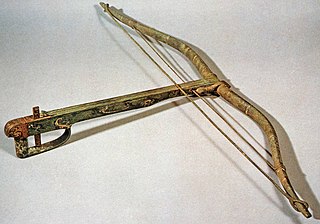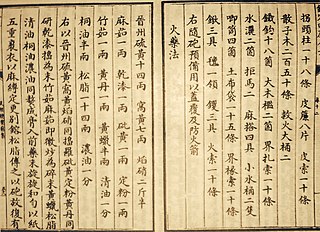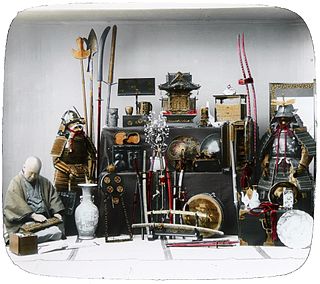 W
WThe Architonnerre (Architronito) was a steam-powered cannon, a description of which is found in the papers of Leonardo da Vinci dating to the late 15th century, although he attributes its invention to Archimedes in the 3rd century BC.
 W
WIt is not clear where and when the crossbow originated, but it is believed to have appeared in China and Europe around the 7th to 5th centuries BC. In China the crossbow was one of the primary military weapons from the Warring States period until the end of the Han dynasty, when armies composed of up to 30 to 50 percent crossbowmen were not unheard of. The crossbow lost much of its popularity after the fall of the Han dynasty, likely due to the rise of the more resilient heavy cavalry during the Six Dynasties. One Tang dynasty source recommends a bow to crossbow ratio of five to one as well as the utilization of the countermarch to make up for the crossbow's lack of speed. The crossbow countermarch technique was further refined in the Song dynasty, but crossbow usage in the military continued to decline after the Mongol conquest of China. Although the crossbow never regained the prominence it once had under the Han, it was never completely phased out either. Even as late as the 17th century, military theorists were still recommending it for wider military adoption, but production had already shifted in favor of firearms and traditional composite bows.
 W
WIn the history of gunpowder there are a range of theories about the transmission of the knowledge of gunpowder and guns from China to the rest of the world.
 W
WThe history of cannon spans several hundred years from the 12th century to modern times. The cannon first appeared in China sometime during the 12th and 13th centuries. It was most likely developed in parallel or as an evolution of an earlier gunpowder weapon called the fire lance. The result was a projectile weapon in the shape of a cylinder that fired projectiles using the explosive pressure of gunpowder. Cannon were used for warfare by the late 13th century in the Yuan dynasty and spread throughout Eurasia in the 14th century. During the Middle Ages, large and small cannon were developed for siege and field battles. The cannon replaced prior siege weapons such as the trebuchet. After the Middle Ages, most large cannon were abandoned in favor of greater numbers of lighter, more maneuverable field artillery. New defensive fortifications such as bastions and star forts were designed specifically to better withstand artillery sieges. Cannon transformed naval warfare with its deadly firepower, allowing vessels to destroy each other from long range. As rifling became more commonplace, the accuracy of cannon was significantly improved, and they became deadlier than ever, especially to infantry. In World War I, a considerable majority of all deaths were caused by cannon; they were also used widely in World War II. Most modern cannon are similar to those used in the Second World War, including autocannon—with the exception of naval guns, which are now significantly smaller in caliber.
 W
WBlack powder was invented by China during the 9th century; these inventions were later transmitted to the Middle East and Europe. The direct ancestor of the firearm is the fire lance. The prototype of the fire lance was invented in China during the 10th century and is the predecessor of all firearms.
 W
WGunpowder is the first explosive to have been developed. Popularly listed as one of the "Four Great Inventions" of China, it was invented during the late Tang dynasty while the earliest recorded chemical formula for gunpowder dates to the Song dynasty. Knowledge of gunpowder spread rapidly throughout Asia, the Middle East and Europe, possibly as a result of the Mongol conquests during the 13th century, with written formulas for it appearing in the Middle East between 1240 and 1280 in a treatise by Hasan al-Rammah, and in Europe by 1267 in the Opus Majus by Roger Bacon. It was employed in warfare to some effect from at least the 10th century in weapons such as fire arrows, bombs, and the fire lance before the appearance of the gun in the 13th century. While the fire lance was eventually supplanted by the gun, other gunpowder weapons such as rockets and fire arrows continued to see use in China, Korea, India, and eventually Europe. Bombs too never ceased to develop and continued to progress into the modern day as grenades, mines, and other explosive implements. Gunpowder has also been used for non-military purposes such as fireworks for entertainment, or in explosives for mining and tunneling.
 W
WPeople have used weapons in warfare, hunting, self-defense, law enforcement, and criminal activity. Weapons also serve many other purposes in society including use in sports, collections for display, and historical displays and demonstrations. As technology has developed throughout history, weapons have changed with it.
 W
WThe Ras Cannons were the first cannons built in South Africa. The two cannons were constructed during the First Boer War on a farm Bokfontein in Brits district.
 W
WThe Mauser 13 mm anti-tank rifle is the world's first anti-tank rifle—the first rifle designed for the sole purpose of destroying armored targets—and the only anti-tank rifle to see service in World War I. Approximately 15,800 were produced.
 W
WVira bruk is a village and an historic iron works in Österåker in Sweden.